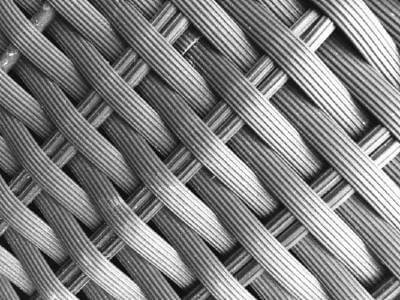Last Updated: October 13, 2021
What exactly is denier? If you are someone who’s hung around people from the outdoor clothing industry or been to enough of those stores, you might have heard the word. However, do you actually know what it means? Here’s what you need to know about deniers, what they are, and how they matter to you.
You must be aware that when you choose items for different activities, you would need them to be thicker or thinner in some cases. You might need a very sturdy material for your outdoor equipment, while your indoor clothing needs to be soft and comfortable.
Basically, you need the material of the item you buy to suit the activity you are using it for and the environment it’s being used in. If not, then it’s a waste of money. This is where a denier rating comes into the picture.
What is Denier Rating?
A denier is a measurement term used in the world of clothing fabrics. It is the measure of the linear density of any given fabric. They can define this by the measurement of the weight of the material (done in grams) for 9000 meters or 5.59 miles.
While the number may seem a little strange, a large length is chosen so that the measurements taken are actually reliable. This is also done because certain fabric materials, like nylon, are so very fine.
How is Fabric Rated Using a Denier
There are various kinds of denier ratings based on the type of fabric that is in question.
Have you ever purchased a sleeping bag, a jacket made especially for the outdoors, or a backpack? You might have noticed markings on it. They may be 20D, 250D Nylon, or maybe 500D Polyester.
These numbers are used to identify how thick the fiber is. When the fiber is thicker, the material becomes stronger and more durable.

- When it comes to normal clothing, the denier rating will often be below 100. For example, in a down jacket, the outside of it needs to be more pliable and have less protection against rubbing. This makes the material a lot lighter, easier to wear and carry.
- For a rain jacket, you would get a higher denier rating, somewhere around 40 to 70D Nylon. This is because the areas that cover the upper portions of your body need to be more durable to offer better protection.
- For sleeping bags, the rating would be lower. They aren’t subjected to very rough conditions and need to be very light and comfortable to use and carry.
- For a tent that you use while backpacking or trekking, the denier rating is low. They are in the range of 10 to 40D Nylon, as they have to be easy to carry, set up, and stretch out.
- When it comes to backpacks, there are a large number of varying denier ratings. These would depend on what kind of use the backpack is subjected to. You can find backpacks with denier ratings of 150D, 350D, and so on.
Backpacks are generally used for rough wear and outdoor purposes. They would be kept against hard surfaces, could brush against trees, rocks, and other outdoor elements. The higher the denier for a backpack, the more durable and long-lasting it becomes.
In general, the higher the rating, the stronger the material is. However, this also depends on the kind of material that is being measured.
You need to be aware of it while choosing clothes and other materials for your outdoor activities. While you need good material so that the items don’t succumb to wear and tear easily, they also need to be light enough so that they are comfortable to use. You don’t want to be stuck in uncomfortable clothing while in the outdoors.
The denier rating also matters in the outward appearance of the material. A smaller rating would be see-through, while a higher would be opaque.
Differences Between 300D and 600D Material
- Fabrics of 300D denier rating are generally lighter and thinner compared to 600D fabrics. Therefore, 300D fabric is mostly used for products like shoe bags and light backpacks that aren’t put to very heavy or rough use.
- 600D fabric is highly durable and very tough. They can be put to rough use, and the strains of the outdoors easily. 600D fabrics are used to make products like your suitcases and outdoor backpacks. These are items that will be subject to wear and tear, so they need to be sturdy.
- 600D fabrics are generally more costly than 300D fabrics. This is because they offer almost double the durability and protection of 300D fabrics.
While choosing your luggage material, it’s always better to go for fabric that has higher denier ratings. You would be carrying them outdoors a lot, and they could even be subjected to climate elements, like rain or extreme sunlight and heat.
Checking your baggage in during flight travel also becomes a lot safer when you’ve got a higher denier fabric rating. They are roughly thrown around and loaded onto different vehicles and the plane itself, so you wouldn’t want them to tear during the process.
Conclusion
So now you know the basics of what deniers are. When you heard the word being used before, you may have been clueless about what it was and what it meant.
Now that you have this knowledge, when you are making purchases for your luggage, your outdoor gear, and other such items, you can make the right choice. You know which denier rating to look for on an outdoor trek and which one to look for in a down jacket.
This information could be very useful the next time you’re at the store. When you are able to let them know what kind of denier you’re looking for, they would be able to help you with your selection with a lot more ease.
